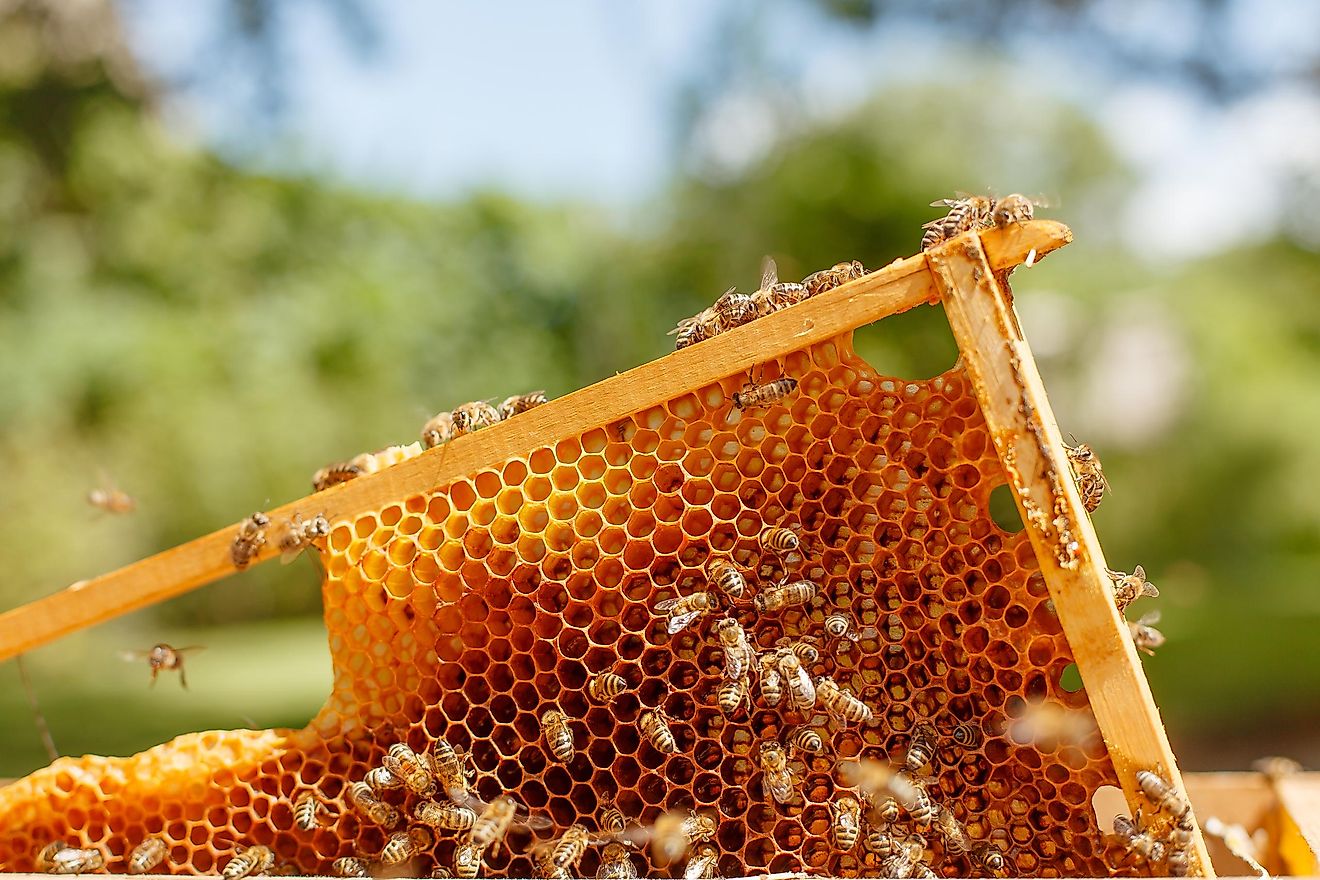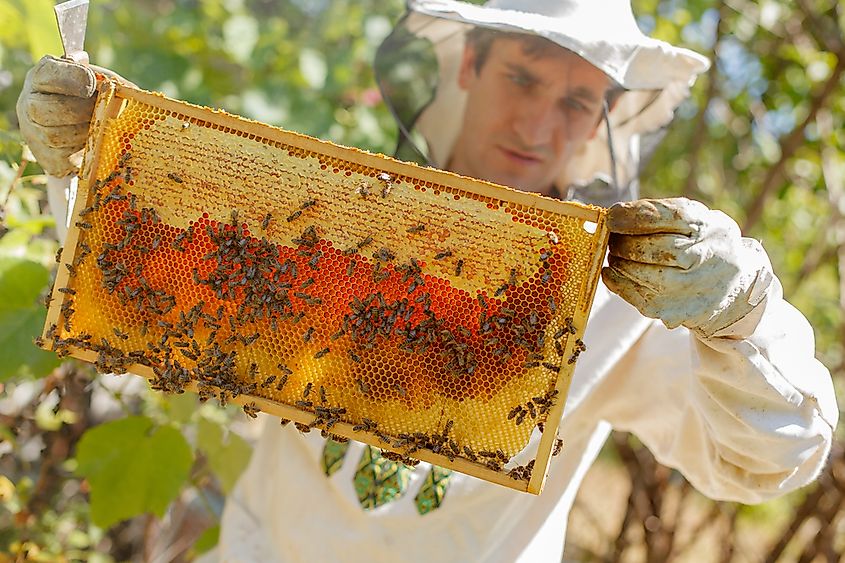How Do Bees Make Honey?

Honey is a sweet thick food product that has a specific taste and aroma and is produced by several kinds of insects but most commonly bees. It comes from floral nectars or other insects’ secretions and is stored in honeycombs. It is food known since ancient times, with uses that go beyond nutrition. It is often being used as medicine in folk treatment for burns and wounds as well as for treating coughs.
About Bees
There are many species of bees, but the best known is the western honey bee. It is the most common species and is known for producing honey and beeswax. Western honey bees form colonies consisting of just one fertile female, also known as the queen, and other bees that can either be workers, meaning non-fertile females, and drones, which are male bees tasked with mating with the queen.
The colonies themselves are very large and usually consist of tens of thousands of bees. The bees communicate with each other in a very complex organized way, using dance language and pheromones. Due to its usefulness in honey production, the western honey bee is one of the most critical species cultivated by beekeepers; it’s one of the first insects that was successfully tamed and can be found on every continent apart from Antarctica. The behavior and organization of western honey bees are often studied scientifically, most notably in fields of learning, memory, even social evolution.
The Beginning of Producing Honey
Bees use floral nectar to produce honey, a type of mucus released by plants, or other forms of secretions from insects. The nectar is used as food by bees, but the majority of it is stored for supplies.
The process of making honey starts when the bee sucks the nectar through its proboscis into its honey stomach (positioned next to its food stomach). The bee needs nectar from more than a thousand flowers to fill up the stomach entirely, which can take around an hour to collect. Once inside the bee, the sugars from the nectar get broken down by enzymes and proteins from the saliva. That process raises the water content inside the nectar.

From The Hive To The Beekeepers
Once the bees return to the hive, the nectar gets transferred to the hive bees, who use their stomachs to partially digest it, at the same time removing parts of the water by vaporizing it. The hive uses various chemical processes to break down the sugars and increase the acidity of the nectar, all the while working as a group and transferring it from one bee to another. In the end, it reaches the honeycomb cells, taking the form of honey.
At first, the bees don’t seal the honey because it still has high water content and prevents the fermentation of sugars. Bees are capable of maintaining desired temperatures in their hives, due to their capability to generate a large amount of body heat. In this case, they use their wings to create air circulation, causing the water to evaporate from the honey. After that, they seal the cells using wax. In that form, honey is eventually collected by beekeepers.











